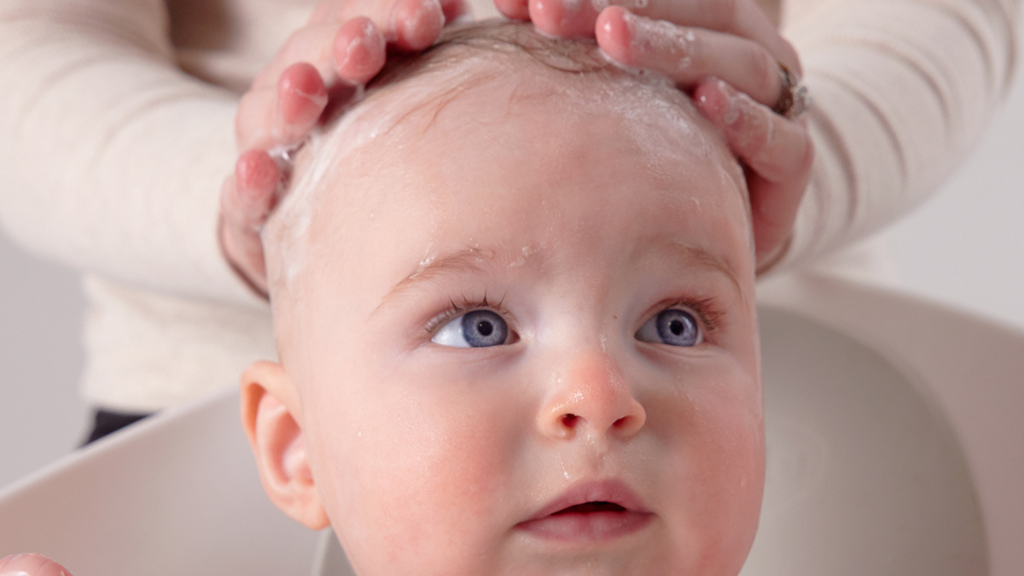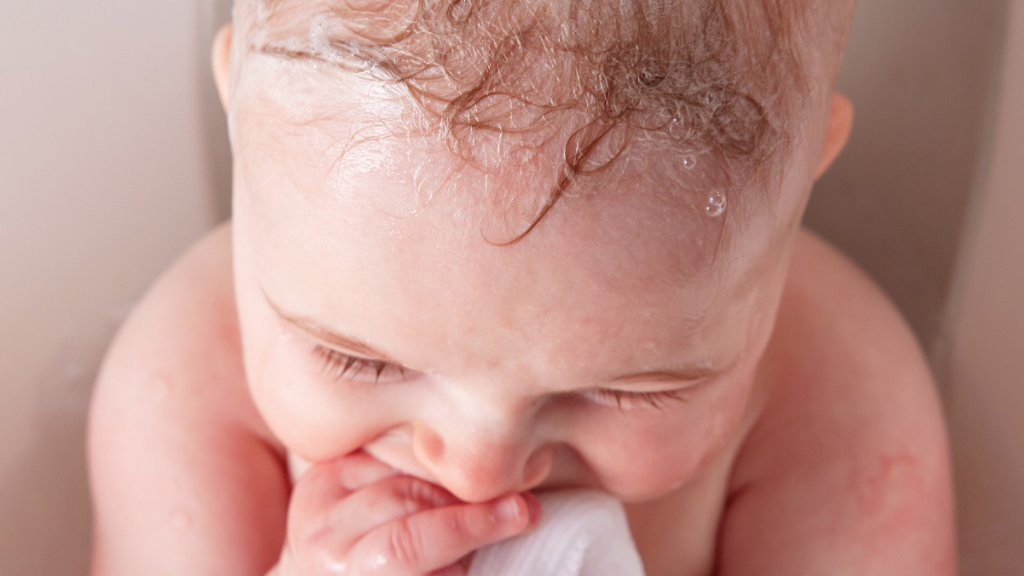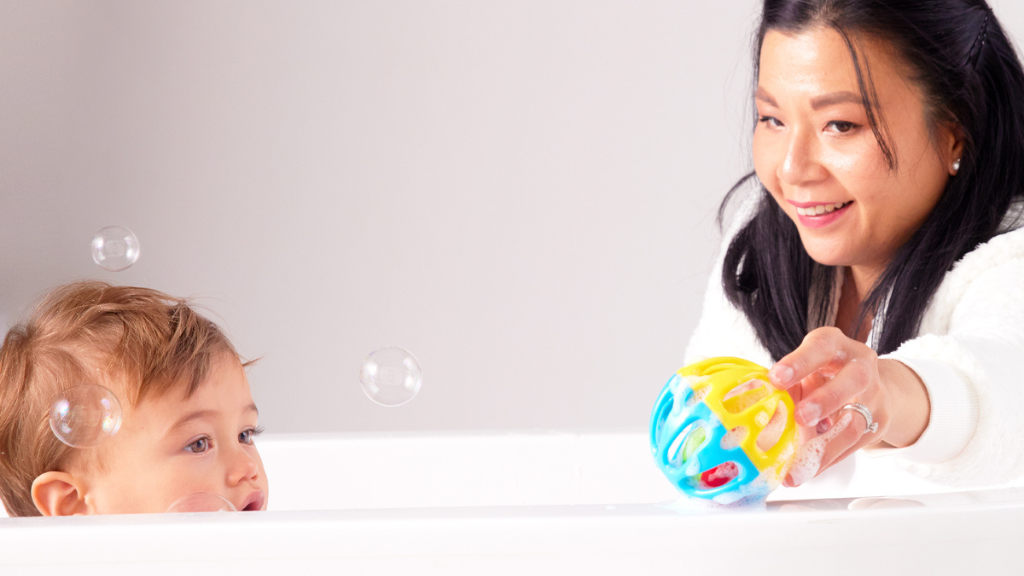baby bathing: how to keep safe with bub in the tub
Aug 05, 2022
Bathing your newborn baby can be a beautiful bonding experience, even though most new parents are a little nervous about the prospect to begin with! To give yourself a head-start, try giving your baby a bath in hospital: where the midwives can assist and give you some ideas on how to make bath time easier and safer at home. Remember … there isn’t anything you can really do wrong, unless your baby’s face falls below the water - in which case your parenting instinct will kick in and immediately lift them straight up! There are things you can do to prepare though.
baby bathing: how to keep safe with bub in the tub
here are the essentials for safe baby bathing
To begin, set up a bathing station, so that you have everything you need close by (as opposed to starting the bath and then having to go and find something else you might need).
- - baby bath or kitchen or laundry sink
- - warm water
- - wash cloths
- - towel
- - clothes
- - nappy
optional extras:
- - baby bath wash/cleanser – soap & fragrance free, pH balanced/neutral
- - moisturiser – fragrance free, pH balanced/neutral
- - bath thermometer
- - bath toys
- - baby bath cradle support -plastic or fabric
- - cup of warm water to rinse hair
- - extension hose between tap and baby bath
where should parents bath their baby?
To start, you’ll need a warm room, as you’ll be undressing your baby and they get very cold when they initially come out of the water. Next, look at your home set up, and the bathing equipment you are using.
baby bath options
There are many different styles of baby baths: some are a stand-alone plastic bath that you can place on a bench or in a big bath; some that are built into a change table under the changing mat; and some that slide out to the side. There are even stands you can purchase that hold a baby bath at waist height. And finally, some parents go straight into the big bath from birth with older siblings that are already being bathed.
types of baths
- - baby bath in stand or change table
- - portable baby bath on a bench or table – you need to watch your back & consider a jug to help fill and empty
- - kitchen or laundry sink while newborn
- - big family bath – with or without a cradle support
- - can shower with baby, warm water, easier with partner to pass baby out to get dry and dressed.
Wherever you choose to bath your baby, set up a changing station close by for bath time, as they are mobile and can be moved or you can lay out a change mat, towel, nappy, clothes and all other needs on a bench or table close by.

the first bath
Delay the first bath by at least 6-24 hours after birth to allow your baby to start to regulate their own temperature. A midwife will often assist you with your first bath. This is very helpful, and it is highly advised that you make sure to try and bath your baby before heading home.
Keep this bath to around 5 minutes only and dry them quickly after the bath as they will get cold very quickly.
There is no formal process, and above all, it should be fun! Some parents like to wash their baby’s face first while baby is wrapped in the towel, especially if they have sticky eyes (very common), this is best. Before adding any bath products to the water, use fresh cotton wool balls to gently clean each eye from the inside to the outside of their lids. If the eye is clear and not sticky, you can use a corner of the face cloth to wash the eye area.
Submerge your baby into the water gently, and then gradually work from their face down to their body, leaving the nappy area until last. If they love it, you can take longer. If not - you can get them out quickly.
When taking baby out of the bath, wrap them immediately in a towel and start gently drying them, paying attention to the oh-so cute little baby creases under their arms, neck, and groin area.
Try to leave the vernix (think creamy substance on the skin after birth) on your baby’s skin, as this acts as a barrier to germs, and moisturises the skin as it gets used to life outside the uterus.
what if baby cries during bath time?
Bath time is often a relaxing and enjoyed time for babies. They enjoy kicking around in the tub, the close contact with their parent looking at them, and the relaxing warmth of the water. But the first few baths are not always loved by babies. They can cry, and it can be worrying and a stressful time as a new parent unaccustomed to bathing a baby.
Babies are very good at sensing your emotions as well - so if you are stressed and nervous about bathing, they may cry more. Try to relax as much as possible. Many parents have found that having 2 parents or adults around at bath time can really help make it all go more smoothly, especially when new parents are at the learning stage of bathing.
If your baby is crying, try placing a warm wet washcloth on their chest/tummy so they feel more contained. Newborn babies are not used to having their limbs free as they have come from a tight space in Mum’s tummy and are often held and wrapped firmly as well. You will also need to keep pouring warm water over the washcloth to keep it heated as it will cool down quickly. If this helps, it is good to always have 2 wash cloths for each bath.
how to hold baby in the bath
Many parents get worried they may slip with their baby in the bath, and their baby’s head may go under the water. Babies can be slippery when in the water and this does happen accidentally or occasionally. If it does, just bring them back up out of the water and give a gentle pat on their back between the shoulder blades to assist with a cough of any water. Thankfully, most babies will be fine in this situation.
A safe way to hold your baby - is cradled under their upper back and neck with your fingers encircling their upper arm so that they can’t slip under the water. Your other hand can then be free to wash your baby.
Please note, never leave your baby alone in the bath – even though devices are supportive, they don’t replace hands-on supervision. Constantly support and touch your little one when they’re in the bath.
cord care
No special care is required when it comes to washing baby’s cord. Wash gently around it and dry thoroughly to help it air out and eventually, drop off. Usually, this happens within 7-10 days. Do not use alcohol or antiseptics on the cord, as this delays separation and can be painful for your baby.
how to choose quality bath products
There are many different products on the market, and it is hard for parents to know which are safe and suitable for their newborn baby.
Many products are labelled with organic or ‘for babies’ often that don’t meet the criteria for newborn skincare guidelines. You can always ask your pharmacist which products are suitable.
words to avoid:
- - antibacterial
- - perfumed
- - soap
- - bubble bath
- - sodium lauryl sulfate, a harsh detergent
Avoid any food or fruit-based products on your baby’s skin until they have eaten and tolerated that food in the future. It is best to wait until they are over 12 months of age.
No talcum or baby powder- they have very fine particles that can be inhaled, which is dangerous.
Check out our new b.box body range

dry skin and eczema
Eczema is increasing in Australia and using products that are not suitable for newborn babies is one of the reasons for this, as their immune system is still developing.
If your baby has dry skin or if you have a family history of eczema, asthma, or hay-fever it is important to choose quality products that will reduce the risk of this becoming an ongoing problem for your baby.
For these babies, applying top-to-toe moisturiser at least once a day after a bath can reduce the risk, as the creams will be absorbed better then. Using thick creams or ointments work better than thin lotions and oils. If their skin is very dry and flaky, moisturise twice a day for best results.
baby bathing routines: how often do babies need to be bathed?
Babies can be bathed every day if you’d like to incorporate this into a routine. However, for most newborn baby’s 2-3 times/ week is plenty, as they don’t really get very dirty or sweat much at this stage. Just a ‘top-and-tail’ daily is all that is required.
what temperature should the water be?
The water should be around 37-38 degrees Celsius; you can use a bath thermometer or if you don’t have one, use your wrist/elbow to test – it should feel warm, not hot! Always use wrist or elbows tgo test, never fingers or hands. This is because our hands are used to hot water and not helpful in testing the temperature.
how long should parents bath their newborn?
5-10 mins should do it, or even shorter if they are not enjoying it and distressed. Also, bath water can get cool quite quickly, so remove your baby from their bath if you feel it is getting too cold. For an older baby who is enjoying the bath, they can stay in as long as they are happy, and if the water is warm enough.
best times to bath baby
Many parents add bathing into the evening routine before bedtime and this can work well, as many babies are relaxed after a bath and ready to sleep. But for some babies, bath time is all fun - and is a stimulating and exciting experience - not a great activity before bedtime as it revs them up! Observe how your baby reacts to the bath and remember: this may change over time, as babies learn to splash as they get older.
Alternatively, if your baby is very unsettled, a bath can really help to soothe them and provide them a ‘reset,’ especially if their tummy is sore, as it is lovely and warm and can act similar to a heat pack!
bath time safety
It’s important to think of your own safety as well as your baby’s when bathing. Be careful of your back, as baby baths are very heavy when filled with water. So, do not attempt to lift this. Using a jug to fill and empty a baby bath is the safest option. There are also some hose extensions that can be attached to your taps and into the bath, which allow for easy filling. Some of the baths on stands include a plughole and hose for letting the water out at the end as well.
what is a top and tail?
It is exactly that, a quick clean of your baby’s face and bottom with a warm wet washer, and no cleanser required to freshen them up. You may also give their hands a wipe-over too. It is quick to do and doesn’t require much to set it up. And when you’re tired: it means you don’t have to fill the bath, fully undress your baby, and submerge them in the bath!
bathing your older baby and toddler
Moving up to the big full-sized bath can be a lot of fun for your baby, as they are able to kick around and move so much more. Try them supported in your arms on their tummy: like they are swimming. If you have more than one child, this is also the most time-efficient way of bathing them all at once: as they have so much fun playing in the water together.

what you’ll need for big bath safety
- - an in-bath rubber style bathmat or adhesive shapes to make the bath less slippery
- - a bath tap cover, so they don’t hit their head
- - large bathmat and extra towel on the floor to mop up extra water
Bathing your baby will become a regular fun occurrence over time, and before you know it, you will learn how to make this work for you and your baby.
Belinda Joyce
Midwife, Maternal & Child Health Nurse
and Author of Survive and Enjoy Your Baby
Belinda Joyce is a midwife, maternal & child health nurse, author of 'Survive and Enjoy Your Baby' and mum to 4. She has a passion for supporting new parents to find their own path to parenthood, as every Mum and Baby are different. Belinda is launching a new online program for mums of young babies in March. It will provide all the information and support to help you through common challenges: including sleep and feeding challenges, play to enhance development and looking after yourself.
